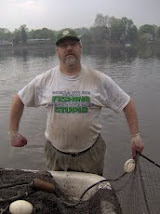NASHVILLE SOUNDS
So, the
question needs to be asked…. Why in all places in this great America is
Nashville the country music capital? And, what the heck is a Grand Ole Opry?
Of
course, after my recent trip to the Athens of the South your intrepid chronicler did some research and
just skimming the surface of the history of “country” music has my head
spinning with its various forms and sub-genres trying to decide what to write
here.
Hopefully
I’ll get some of this correct. If I don’t, I guess my dog will run away, my truck will
get a flat tire and my cold beer will
get warm quickly….
Actually,
country music is far more popular than I ever imagined. From what I have read
the dulcet tones of warbling cowboys and toe tapping honky-tonk, et al, is
enjoyed by over 40% of the population, that listeners are often affluent
and homeowners, and there are more evening commuters tuning into country music
stations than anything else.
That
still doesn’t answer the question, ‘why Nashville?’
As for the Nashville sound, it was a move in the 50's to revive country sales devastated by the rise of rock and roll by using smooth strings and choruses and sophisticated background vocals. As for the Nashville Sounds, they are a AAA team of the Oakland Athletics.
HILLBILLY MUSIC
Country
has its roots in Appalachian folk music, mostly narrative ballads and
traditional music brought from Europe mainly by English, Irish and Scottish settlers
to the area, as well as African-American blues. Instruments typically played
are banjos, fiddles, dulcimers and guitars. Parts of Appalachia are still isolated
and poor and inhabitants often stereotyped as uneducated and unrefined, but
there is a rich musical heritage from this region.
In the
early 1900s there was a movement to collect and preserve these folk songs played
by the people of Appalachia where previously the music was unwritten. For
generations the music was passed on orally and musically to the next
generation, sometimes just within families. When they began to collect this
rich legacy the researchers first wrote the notes of the songs and lyrics down
and later when the equipment was invented the music was electronically
recorded. In the earliest recordings the artists had to travel to New York City
or Atlanta, but in the 1920s a producer for the Victor Talking Machine Company
set up a recording studio in a State Street building in Bristol, Tennessee.
State Street is the border between Virginia and Tennessee in Bristol. Artists were offered $50 for each side cut
and 2 ½ cents for each single sold. The
popularity of the music, called “Hillbilly Music”, which wasn’t a pejorative
term but instead used to differentiate the music from gospel and blues, quickly
became popular beyond the hills of Appalachia.
Today
Bristol Tennessee is considered the Birthplace of Country Music. The actual
site of the Bristol recordings in Bristol, Tennessee is now a parking lot but
there is a commemorative plaque there, while the Birthplace of Country Music
Museum is located a few blocks away in Bristol Virginia.
RED HOT FIDDLE PLAYING
The
Grand Ole Opry began as a radio program on WSM 650 in Nashville Tennessee in
1925. It was called Barn Dance then and the first performer introduced was 77
year old Uncle Jimmy Thompson. The show’s producer wanted each segment to end
with some “red hot fiddle playing” and the Fruit Jar Drinkers were tasked with
that endeavor. The name was changed to the Grand Ole Opry when the announcer
quipped one night in 1927 that the classical music that preceded the program
had been taken from Grand Opera and what will follow is Grand Ole Opry. He then
introduced the Harmonica King, DeFord Bailey.
The
hour long program was a massive hit and the crowds that gathered at the radio station on Seventh and Union soon overwhelmed
the studio space, requiring a move (and an admission charge) to several other
venues over the years before the Grand Ole Opry settled in the Ryman Auditorium on 4th Street in 1943. The Opry was held there until 1974 when a new home was built 9 miles east of Nashville. From the main stage of the Ryman a circle was cut out and placed on the new building's stage in a nod to the rich history of the Opry. But, when the Opry moved out of town so did the tourists and the once vibrant area of Broadway fell into a crime infested area for decades until entrepreneurs saved the Ryman and bars like Tootsie's Orchid Lounge from the wrecking ball.
Here’s a great list of the history of all the venues of the Grand Ole Opry over the years.
 |
| crowd outside Ryman Auditorium |
Although the Grand Ole Opry is no longer televised you can still listen to WSM 650 the radio station that started it all online at: WSM 650 ONLINE
THE SHOW THAT MADE COUNTRY MUSIC FAMOUS
The Grand Ole Opry is perhaps the most visited attraction in America; at least that was what our tour guide at the place said after we paid our $30 per. There is now a sprawling shopping mall adjacent to the Opry called Opry Mills, but until 1997 that area had a musically themed amusement park called Opryland and between the two destinations 2.5 million would visit annually. No matter how many quips I could make about country music there is no doubt about the popularity.
Having been in a lot of venues over my career for me the Grand Ole Opry wasn't that special, but I can understand why enthusiasts would be interested in the back halls and dressing rooms and the machinations of the shows.
The tour takes you around to the performer’s entrance, where our guides gleefully note there is no valet parking and the musicians need to drive themselves. We are then shown the check in desk where there is a mailbox for performers…yes you can write your favorite member and address it to the Grand Ole Opry and it’ll end up in their mailbox… Our guide on this part of the tour, a little blonde waif, rattled off the corresponding names of shouted out numbers. The check in desk attendant will then assign the performer to a particular dressing room; there are several differently themed dressing rooms. (I was particularly keen on seeing the Minnie Pearl themed room).
Interesting note: None of the dressing rooms have a bathroom, though there are communal ones down the hall. At least they are not outside……………….
There I go again with a quip.
The final stop on this tour was the chance to walk on stage and have your photo taken. The $25 per pictures were available afterwards, but in keeping with your trusty cheapskates Janet photographed the photo and we now have a lasting memory of what is the most visited tourist destination in America.
 |
| on the stage |
Membership
in the Grand Ole Opry is the highest achievement in country music. Going into
the requirements here would be counterproductive, but suffice it to say that
two notables are NOT “members” of the Grand Ole Opry. Taylor Swift is “too pop” according to our guide and Hank Williams was “too drunk”. In fact this month is the anniversary of
Hank Williams being “fired” by the Grand Ole Opry because he missed too many
shows.
Darius
Rucker of Hootie and the Blowfish fame is a member.
Had we not been flying out early the next morning we might have considered staying for that night's performance of the Grand Ole Opry.. Surprisingly tickets were still available.
 |
| Taylor Swift at the Grand Ole Opry |






































No comments:
Post a Comment